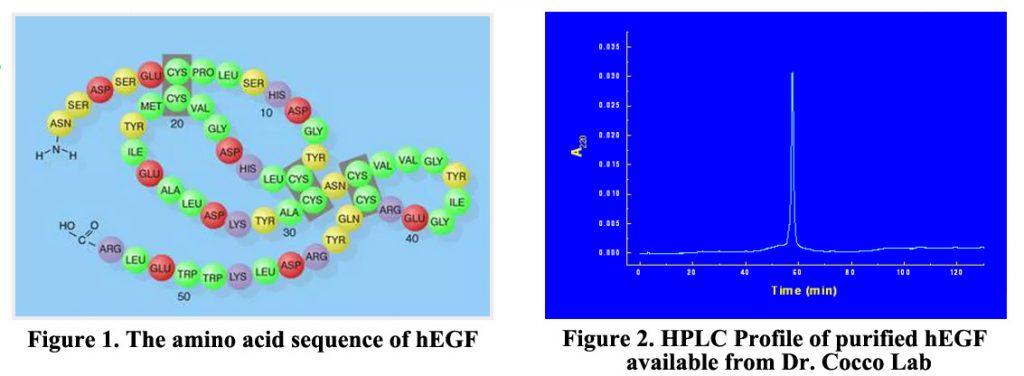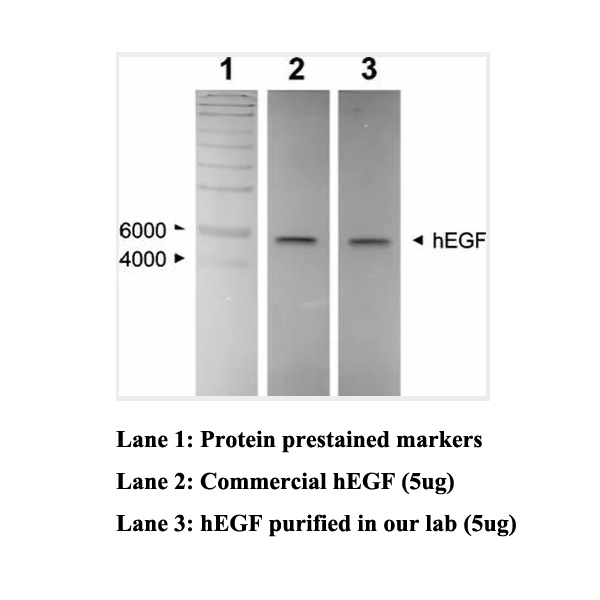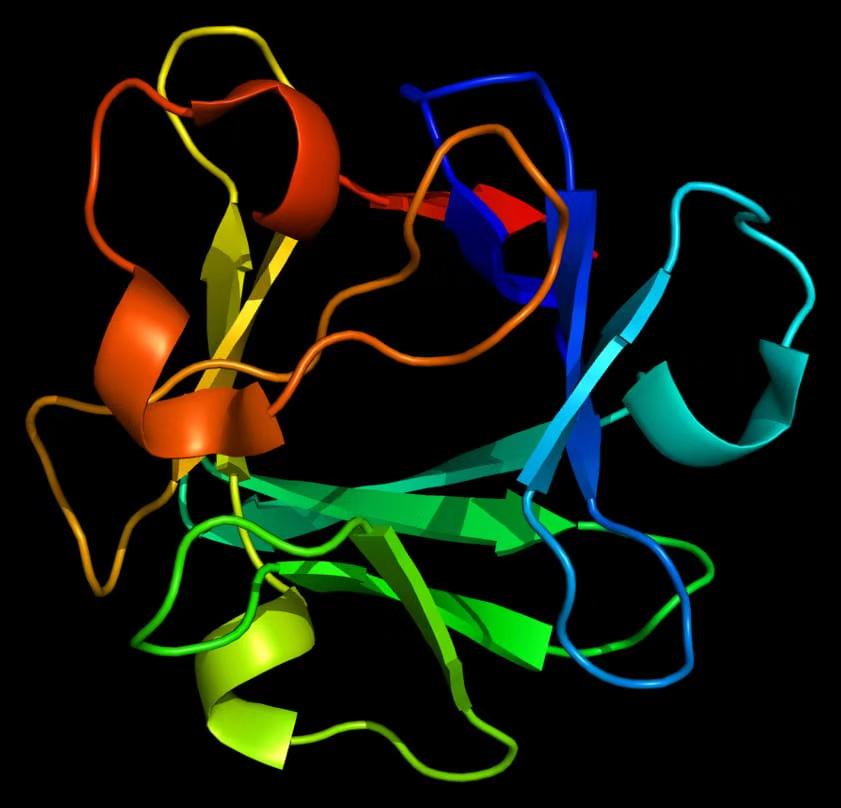Human Epidermal Growth Factor (hEGF)
Human epidermal growth factor (hEGF) is a 53 amino acid polypeptide (Figures 1 and 2) found in our duodenum and salivary glands. It is capable of stimulating cell proliferation and differentiation of various epidermal tissues, such as epidermis of skin, gastrointestinal tract and cornea.
EGF was first isolated from the submaxillary gland of mouse in 1960 by Stanley Cohen, who won the Nobel Prize in Physiology and Medicine for his discovery and research on EGF in 1986. The first isolation of hEGF was from human urine in 1962.
The healing processes enhanced by hEGF are well-documented in numerous applications. It acts as an active ingredient for promoting the repair of duodenal ulcer, hepatic injury and eye damage. It minimizes the effects of ureteral obstruction, assists the regeneration of nerve tissue and potentiates the effects of anti-cancer drugs.
Its effects have been extended in commercial sector. Cosmetic and skincare products supplemented with hEGF available from GVN (Figure 3 and 4) are able to regenerate the skin epidermis. It improves the texture and condition of the skin. Most importantly, it has passed safety tests, toxicity tests, allergy tests and no adverse effects have been reported.
Basic Fibroblast Growth Factor (bFGF)
Basic fibroblast growth factor, also known as bFGF or FGF2 (Figure 5), is a member of the fibroblast growth factor family. Human bFGF (hbFGF) is a 16.2 kDa polypeptide containing 146 amino acids present in the subendothelial extracellular matrix and basement membranes of blood vessels.
One of the functions of bFGF is the promotion of endothelial cell proliferation. It mediates the process of angiogenesis, the growth of blood vessels from the pre-existing vasculature. It occurs in the healthy body for healing wounds and restoring blood flow to tissues after injury.
Besides, bFGF is involved in tissue repairing. It stimulates the proliferation of fibroblasts that give rise to granulation tissue which fills up a wound space in the wound healing process. It not only shortens the time of recovery, but also improves the quality of wound healing.
At Dr. Cocco Lab, we have expressed recombinant hbFGF using different bacterial host systems. Works are undertaken to produce hbFGF at a cost-effective price on a large scale.



